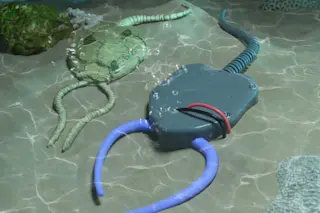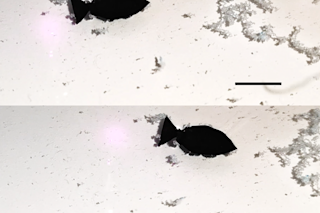Survival of the fittest is a brutal game, as a group of robots in a Swiss lab have just demonstrated. When the robots competed for points and only the most successful passed on their computer code (which is analogous to our genetic code), they soon evolved into greedy deception-bots that tried to horde all the points for themselves.
The robots — soccer ball-sized assemblages of wheels, sensors and flashing light signals, coordinated by a digital neural network — were placed by their designers in an arena, with paper discs signifying “food” and “poison” at opposite ends. Finding and staying beside the food earned the robots points.... After each iteration of the trial, researchers picked the most successful robots, copied their digital brains and used them to program a new robot generation, with a dash of random change thrown in for mutation [Wired.com].
The first generations of robots rolled around the ...














